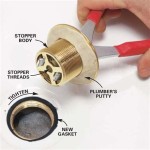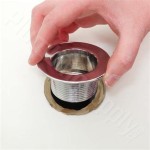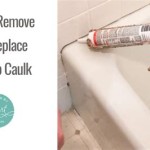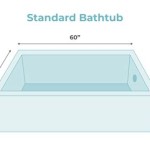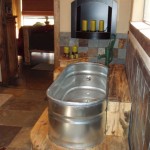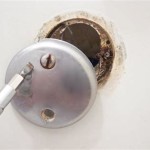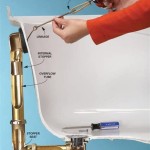Are Bathtubs Going Out Of Style in 2024?
The question of whether bathtubs are becoming obsolete is a complex one, influenced by evolving lifestyle preferences, technological advancements in bathroom design, and a growing awareness of resource conservation. Examining current trends and expert opinions provides valuable insights into the bathtub's future in residential architecture.
For decades, the bathtub held a central position within the American bathroom. It represented a space for hygiene, relaxation, and even a touch of luxury. However, shifts in how individuals utilize their bathrooms, coupled with space constraints and a desire for more efficient water consumption, have led to a re-evaluation of the traditional bathtub's necessity.
The housing market also plays a significant role. Smaller homes and apartments often prioritize space optimization, making a large soaking tub a less practical choice. Conversely, in luxury homes and renovations, the bathtub may become a statement piece, an amenity that elevates the perceived value of the property.
Ultimately, the perceived decline in bathtub popularity isn't necessarily a complete disappearance. Instead, it represents a transformation in how and where bathtubs are incorporated into modern homes, with some adapting to meet contemporary needs and preferences.
Space Optimization and the Rise of Showers
One of the primary factors contributing to the perceived decline in bathtub usage is the increasing focus on space optimization, particularly in smaller homes and urban apartments. Bathrooms are often the smallest rooms in a dwelling, and homeowners are seeking ways to maximize functionality and create a more spacious feel. Showers, especially walk-in showers with glass enclosures, have emerged as a popular alternative, offering a streamlined aesthetic and consuming less floor space compared to traditional bathtubs.
The preference for showers also stems from lifestyle changes. Modern lifestyles often prioritize efficiency and convenience. Showers are quicker and easier to use than bathtubs, fitting seamlessly into busy schedules. Furthermore, the advent of advanced shower technologies, such as multiple showerheads, body sprays, and digital temperature controls, have elevated the showering experience, blurring the lines between functionality and luxury.
The shift towards showers is not merely about space and convenience; it's also driven by accessibility considerations. Walk-in showers with low thresholds or no thresholds at all cater to individuals with mobility issues, allowing them to age in place comfortably and safely. This factor is becoming increasingly relevant as the population ages and universal design principles gain wider acceptance.
From a practical standpoint, showers are often easier to clean and maintain than bathtubs. The smooth surfaces of shower enclosures are less prone to soap scum and mildew buildup, requiring less effort for routine cleaning. This added convenience appeals to homeowners seeking low-maintenance living spaces.
However, the rise of showers does not entirely negate the bathtub's appeal. Many homeowners still appreciate the relaxation and therapeutic benefits of soaking in a warm bath, especially after a long day. The ideal solution often involves incorporating both a shower and a bathtub into the bathroom design, if space allows. In situations where space is limited, homeowners may opt for a shower-tub combination, which provides versatility without sacrificing functionality.
The trend towards space optimization suggests that the standard, oversized bathtub may be declining in popularity, but smaller, more efficient bathtubs designed for specific needs, such as soaking tubs or Japanese-style tubs, may continue to find a niche in the market. These specialized bathtubs cater to individuals who prioritize relaxation and self-care, and are willing to allocate space for a dedicated bathing area.
Water Conservation and Environmental Concerns
Environmental awareness and the increasing emphasis on water conservation are also influencing bathtub usage. Bathing typically consumes significantly more water than showering. As water scarcity becomes a more pressing global issue, homeowners are becoming more conscious of their water consumption habits. This concern is driving the adoption of water-efficient showerheads, low-flow toilets, and a general shift away from water-intensive practices, such as taking frequent baths.
Municipalities across the country are implementing water conservation programs and offering incentives for homeowners to upgrade to water-efficient fixtures. These initiatives further encourage the adoption of showers over bathtubs, as showers can be easily retrofitted with water-saving showerheads without compromising the user experience.
The environmental impact of producing and disposing of bathtubs is also a consideration. Bathtubs are typically made from materials such as acrylic, fiberglass, or cast iron, which require significant energy and resources to manufacture. The disposal of old bathtubs can also pose environmental challenges, as these bulky items often end up in landfills.
However, the environmental concerns surrounding bathtubs are not insurmountable. Manufacturers are increasingly exploring sustainable materials and production processes, such as using recycled materials or developing more energy-efficient manufacturing techniques. Furthermore, some companies offer bathtub recycling programs, allowing homeowners to dispose of their old bathtubs responsibly.
The perception of bathtubs as water-guzzling fixtures can be addressed through behavioral changes. Homeowners can reduce their water consumption by taking shorter baths, using less water to fill the tub, and avoiding unnecessary refills. Additionally, the installation of low-flow faucets and showerheads can further minimize water usage during bathing.
The focus on water conservation suggests that bathtubs may need to evolve to become more water-efficient. Smaller, deeper soaking tubs designed to minimize water displacement are one potential solution. These tubs provide the same level of relaxation and therapeutic benefits as traditional bathtubs, but require significantly less water to fill.
Luxury Bathing Experiences and the Resurgence of the Statement Tub
Despite the trends towards space optimization and water conservation, bathtubs are not entirely disappearing from the luxury market. In high-end homes and renovations, bathtubs are often considered a statement piece, an amenity that elevates the perceived value of the property and provides a luxurious bathing experience. These statement tubs are often crafted from high-end materials, such as copper, stone, or exotic wood, and feature unique designs and features.
The resurgence of the statement tub is driven by a growing desire for self-care and wellness. In today's fast-paced world, many individuals are seeking ways to escape stress and create a sanctuary in their own homes. Bathing is often seen as a therapeutic activity that can promote relaxation, reduce anxiety, and improve sleep quality. A luxurious bathtub can enhance this experience, providing a dedicated space for self-care and rejuvenation.
Technological advancements are also contributing to the appeal of luxury bathtubs. Features such as whirlpool jets, chromatherapy lighting, and built-in audio systems can transform the bathing experience into a personalized spa treatment. These high-tech amenities cater to individuals who appreciate the finer things in life and are willing to invest in a premium bathing experience.
The design of luxury bathtubs is also evolving. Freestanding tubs are becoming increasingly popular, as they offer a sculptural element that can enhance the aesthetics of the bathroom. These tubs are often placed in prominent locations, such as near a window with a scenic view or in the center of the room as a focal point.
The trend towards luxury bathing experiences suggests that bathtubs will continue to have a place in the high-end market. However, the focus will likely be on quality, design, and features rather than sheer size. Homeowners are seeking bathtubs that are not only functional, but also aesthetically pleasing and technologically advanced.
The incorporation of smart home technology into bathtubs is another emerging trend. Smart bathtubs can be controlled remotely via a smartphone app, allowing users to preheat the water, adjust the temperature, and activate whirlpool jets from anywhere. This level of convenience and personalization is appealing to tech-savvy homeowners who value automation and control.
In conclusion, while the standard, oversized bathtub may be declining in popularity due to space constraints, water conservation concerns, and lifestyle changes, bathtubs are not entirely going out of style. Specialized bathtubs designed for specific needs, such as soaking tubs and Japanese-style tubs, are finding a niche in the market. Furthermore, luxury bathtubs continue to be a popular amenity in high-end homes, offering a statement piece and a luxurious bathing experience. The future of the bathtub lies in adaptation and innovation, with manufacturers exploring sustainable materials, water-efficient designs, and advanced technologies to meet the evolving needs and preferences of homeowners.

Best Porcelain Bathtub For Your Bathroom Propertytalk
7 Bathroom Trends That Will Dominate In 2024 According To Designers

Top 10 Best Freestanding Bathtubs In 2024 The Complete Guide To Help You Choose

Top 10 Bathroom Trends For 2024 Nikki S Plate

5 Hottest Bathroom Trends For 2024 And 50 Ideas Digsdigs

Top 10 Bathroom Trends For 2024 Nikki S Plate

Bathtubs Vs Shower Re Value 2024 Badeloft

Splash Into Style Unveiling Tub Shower Trends For 2024 Clem Contracting Interior Home Renovations

The Inside Outside Guys Tub To Shower Conversions Can Offer Safety Style Wdvd Fm

How To Choose The Best Freestanding Bathtubs In 2024 Alibaba Com Reads
Related Posts

